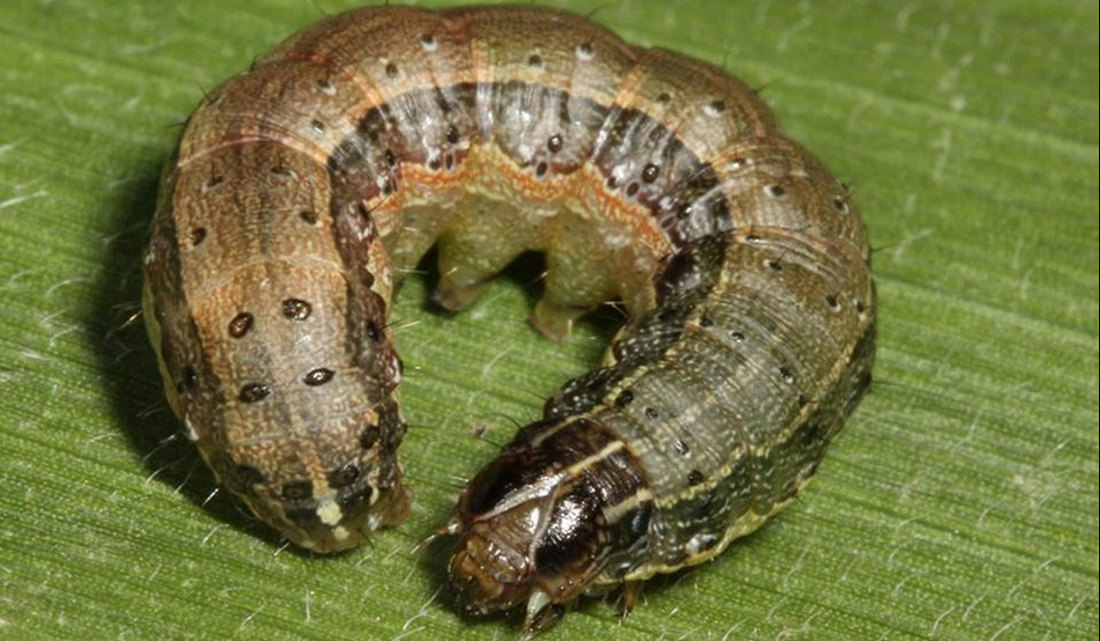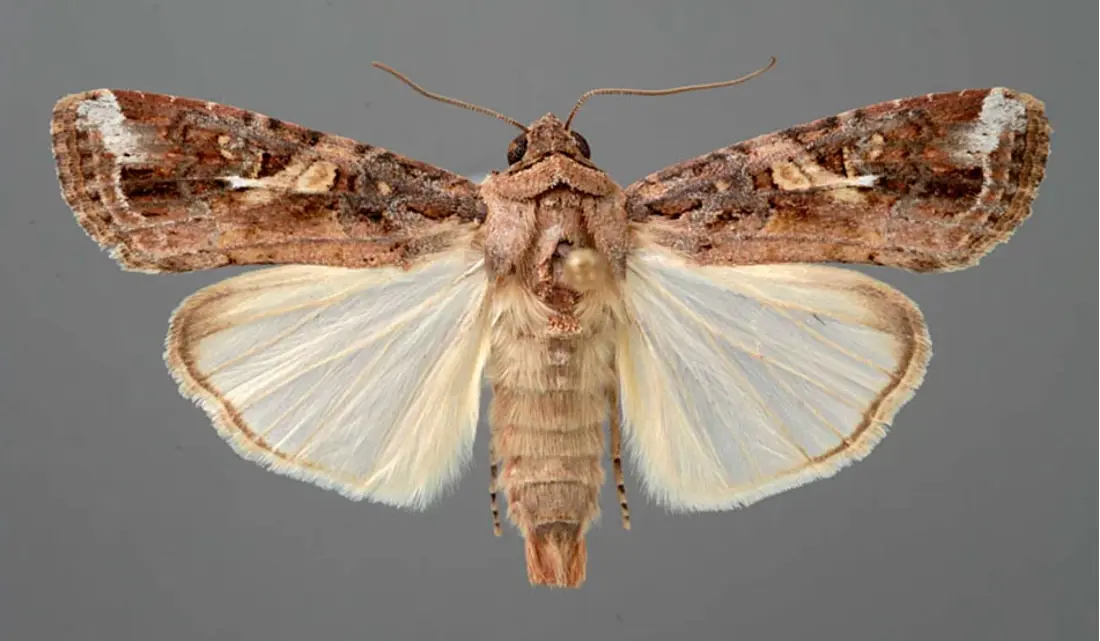Fall armyworm
2 min read
Fall armyworm is a plant pest that can feed on over 350 plant species, particularly sweetcorn and maize which are vital forages for your herd. Its spread typically begins in December, so if you grow these crops, early detection and regular monitoring are key to protect your feed and prevent the pest’s spread in your community.
Monitor crops closely, especially sweetcorn and maize, fall armyworm has the potential to cause significant damage to these crops if not managed. If you suspect fall armyworm on your property, contact your crop manager or industry group for actions and advice on the best management options for your crops.
The fall armyworm is not a worm but a highly invasive moth that can threaten crops in its larval stage. The larvae may do the damage, but the adult moths ensure the rapid spread of the pest. Adult fall armyworm moths are strong flyers and will travel hundreds of kilometres on wind. The larvae can also be spread in cut flowers, fruit, and vegetables. If pushed by winds, moths can fly up to 100km a day.
The fall armyworm (Spodoptera frugiperda) arrived in New Zealand around February 2022, it is thought to have come from Australia. The moth is found around the world and is present in the Americas, Africa and Asia, and more recently has been found in Papua New Guinea, parts of Australia and now New Zealand.

Fall armyworm larve.
Have a dark head with an upside down, pale, Y-shaped marking, and four dark spots aligned in a square on the second-to-last body segment.
Typically laid in clusters of 100 to 300 on the underside of leaves. The egg masses are covered in a layer of white or greyish hairs, which can make them look furry or mouldy.

Fall armyworm moth.
Have brown-grey forewings and cream-coloured hind wings. Adult moths are nocturnal and are most active during late summer and early autumn.
Early detection and strong surveillance are our best defence against the fall armyworm. It is important to look for signs of the eggs, larvae and moths. This pest mainly feeds on sweetcorn and maize but it can survive on a range of plant species across 76 plant families including, potatoes, capsicums, aubergines, and some brassicas.
There are no negative consequences to growers for reporting, as this pest will not be controlled by removing crops.
The fall armyworm is resistant to some sprays so farmers and growers should consult with relevant advisers. If you are supplying crops for human or animal consumption, these must meet the standards of residue levels set by those industries.
Cosmopolitan armyworm and Corn earworm (both present in NZ) have also been found in maize crops in Northland and Waikato.
The first sign of fall armyworm infestation is usually pin hole feeding marks by new larvae. As larvae grow, feeding will result in large, jagged holes right across the leaf. Late-instar larvae may burrow into ears of corn and feed directly on kernels.
If you suspect fall armyworm on your property, contact your crop manager or industry group for the actions to take and advice on the best management options for your crops.
Contact the Foundation for Arable Research (FAR) if you have any questions about the long-term management programmes for fall armyworm.
Surveillance and pest management, including the use of registered insecticides, is our best defence. It's important you know what to look out for and know what to do if you have found it.
Now’s the perfect time to check in, plan, and set up for a strong season. We’ve pulled together smart tips and tools to help you stay ahead all winter long.
Whether you prefer to read, listen, or download handy guides, we’ve got you covered with trusted tools to support your journey every step of the way.
Put our proven strategies and seasonal tools to work. Boost production, support animal health and watch your profits hum.
Tools that are backed by science, shaped by farmers and made for this season.
That’s Summer Smarts.